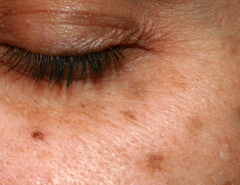Five common skin manifestations of COVID-19 have been identified, according to research published in the British Journal of Dermatology.
Images of unexplained skin eruptions in 120 patients with either suspected or confirmed COVID-19 were reviewed by four dermatologists and a consensus was reached. These patterns were then applied to the rest of the images, consisting of 375 patients in total, and further refined.
The five skin manifestations identified were: acral areas of erythema-oedema or pustules (pseudo-chilblain), other vesicular eruptions, urticarial lesions, other maculopapules, and livedo or necrosis.
According to the study, 19% of cases presented with pseudo-chilblain and were associated with younger patients, lasting for a mean of 12.7 days, with 32% suffering from pain and 30% reported itching.
Other vesicular eruptions were seen in 9%, which were associated with middle-aged patients and lasting for a mean of 10.4 days with itching common (68%).
Urticarial lesions were present in 19% and other maculopapules in 47%, which generally lasted for a shorter period of time – 6.8 mean days for urticarial and 8.6 for maculopapular – and were usually associated with more severe COVID-19 disease. This group had a 2% mortality in the sample, and 92% of patients experienced itching for urticariform lesions and 57% for maculopapular.
Finally, livedo or necrosis was present in 6% of cases and were associated with older patients with more severe diseases and had a 10% mortality. However, the research found that the manifestations of COVID-19 were more variable in this group, including transient livedo, with some patients not requiring hospitalisation.
The study researchers said, “Some of the skin manifestations associated with COVID-19 are common and can have many causes, particularly maculopapules and urticarial lesions. As such, they may not be particularly helpful as an aide to diagnosis. Livedoid and necrotic lesions, on the other hand, are relatively uncommon, and mostly appeared in elderly and severe patients. However, it is hard to tell if they are directly caused by COVID-19, or simply indicate complications.”
They
added that more severe cases of COVID-19 are not represented due to the issues of
obtaining consent.









